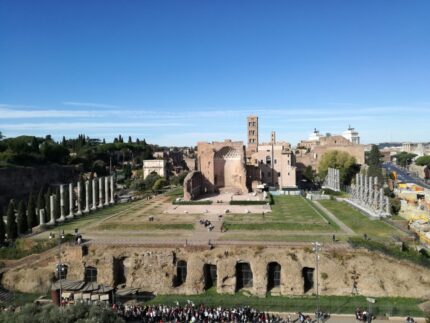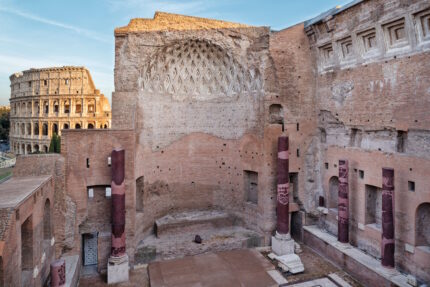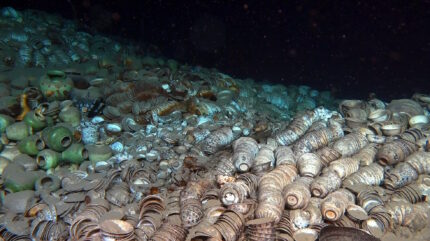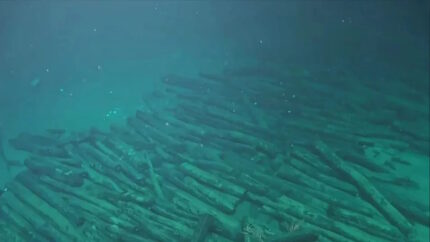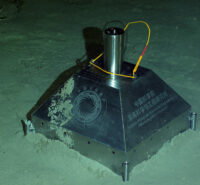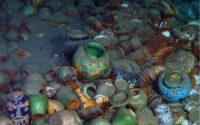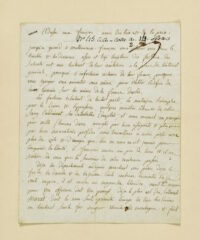 The manifesto written by the hand of Charlotte Corday justifying her assassination of Jacobin leader Jean-Paul Marat has been bought at auction by the region of Normandy, the city of Caen and the department of Calvados. It’s a good thing they were able to pool their resources to save this priceless historical record, because the autograph manuscript, estimated at 80,000 – 100,000 EUR ($92,000-108,000), blew past the high figure and sold for 215,000 EUR ($232,000). And that’s just the hammer price. The final cost with fees and taxes was 270,000 EUR ($292,000).
The manifesto written by the hand of Charlotte Corday justifying her assassination of Jacobin leader Jean-Paul Marat has been bought at auction by the region of Normandy, the city of Caen and the department of Calvados. It’s a good thing they were able to pool their resources to save this priceless historical record, because the autograph manuscript, estimated at 80,000 – 100,000 EUR ($92,000-108,000), blew past the high figure and sold for 215,000 EUR ($232,000). And that’s just the hammer price. The final cost with fees and taxes was 270,000 EUR ($292,000).
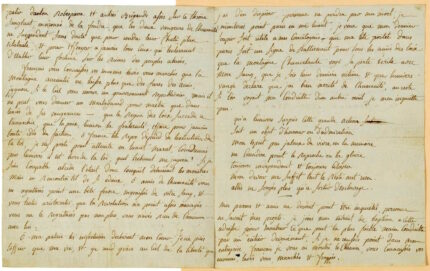 Born in Normandy to a penniless minor aristocratic family, Marie-Anne Charlotte de Corday d’Armont was sent to the convent of Abbaye-aux-Dames in Caen at age 13 to receive an education. She remained in the convent until she left for Paris ten years later, studying the great French authors, including Voltaire, Rousseau and her own great-great-great-grandfather, the tragedian Pierre Corneille, whom Voltaire declared the French equivalent of Homer.
Born in Normandy to a penniless minor aristocratic family, Marie-Anne Charlotte de Corday d’Armont was sent to the convent of Abbaye-aux-Dames in Caen at age 13 to receive an education. She remained in the convent until she left for Paris ten years later, studying the great French authors, including Voltaire, Rousseau and her own great-great-great-grandfather, the tragedian Pierre Corneille, whom Voltaire declared the French equivalent of Homer.
Her intellectual ferment was stimulated by the heady philosophical debates of the French revolutionaries. She sided with the moderate Girondins and was spurred to action by the September Massacres on 1792 in which more than 1,000 prisoners, half of Paris’ prison population, were summarily executed out of fear they were in league with Prussian invaders. Corday held Marat’s incendiary rhetoric and his radical Montagnard faction responsible for this outrage.
 Determined that killing Marat would end the orgies of revolutionary violence taking hold in France, Charlotte set out for Paris on July 9th, 1792. She bought a knife, wrote her three-page manifesto
Determined that killing Marat would end the orgies of revolutionary violence taking hold in France, Charlotte set out for Paris on July 9th, 1792. She bought a knife, wrote her three-page manifesto
Adresse aux Français amis des lois et de la paix (“Address to the French, friends of Law and Peace”) and sighted her quarry. On the evening of July 13th, she gained admission to Marat’s quarters by claiming she had information about a Girondist plot in Caen. She was shown into his room where he was in his sulfur bath. (His skin disease was so severe at this point that he basically never left the bath anymore.) She told him the names of the purported conspiracists and then stabbed him in the heart.
She had no intention of getting out of this alive. She knew she’d be arrested and executed for this crime and she came prepared: she had stashed the letter in her bodice. It was found during a search of her person after her arrest, but it was never entered into evidence at her trial because the prosecutor preferred to promote the politically expedient fiction that Corday was a royalist, nor did it square with the Montagnards’ insistence that Corday was but a tool of a vast Girondist conspiracy.
The last lines of her manifesto read:
My parents and friends should not be worried, no one knew my plans. I am attaching my baptismal certificate to this address to show what the weakest hand can do led by complete devotion. If I do not succeed in my enterprise, Frenchmen, I have shown you the way, you know your enemies, rise up, march and strike.
 Charlotte Corday was tried, convicted and died four days after her victim, beheaded by guillotine. Her statement of purpose disappeared, reappearing at an auction in 1834. Since then it has been sold another seven times, passing from private collection to private collection. At first Normandy’s cultural heritage authorities tried to prevent this latest sale, fearing it could be acquired by a foreign buyer and leave the country. When they weren’t able to get it pulled from the auction, they chipped in with departmental and city authorities to bring this hugely significant manuscript back to Charlotte Corday’s beloved homeland.
Charlotte Corday was tried, convicted and died four days after her victim, beheaded by guillotine. Her statement of purpose disappeared, reappearing at an auction in 1834. Since then it has been sold another seven times, passing from private collection to private collection. At first Normandy’s cultural heritage authorities tried to prevent this latest sale, fearing it could be acquired by a foreign buyer and leave the country. When they weren’t able to get it pulled from the auction, they chipped in with departmental and city authorities to bring this hugely significant manuscript back to Charlotte Corday’s beloved homeland.

